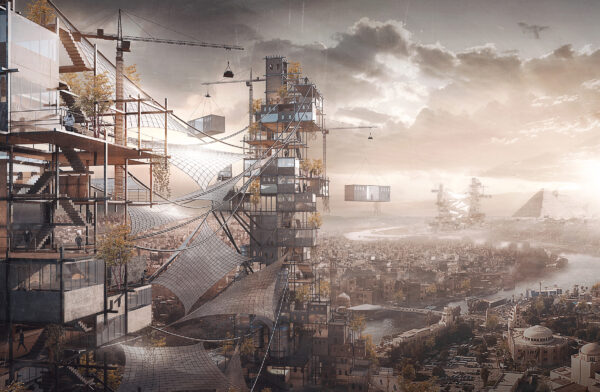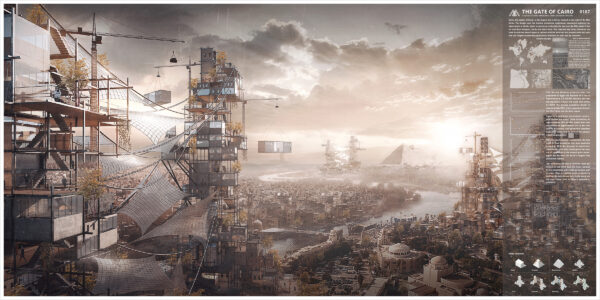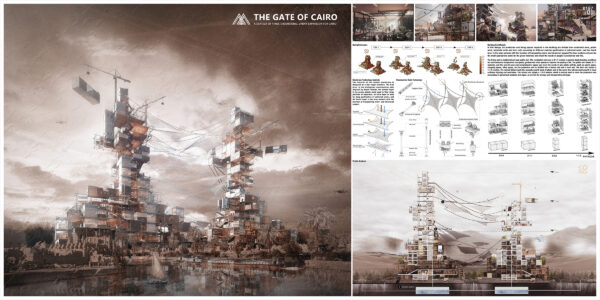Honorable Mention
2023 Skyscraper Competition
Chang Han, Cheng Qian, Yuxiao Yang, Rangrang Pei, Youjia Jiang
China
Cairo, the capital of Egypt, is the largest city in Africa, located in the south of the Nile Delta and is one of the four birthplaces of human civilization. Since the 1860’s, Cairo has adopted the French urban design plan, and the city has entered modern society with the ancient color of the Middle Ages. It is a city with the integration of ancient culture and modern civilization, oriental style and western style.
Cairo is one of the most populous cities in the world. Due to the expansion of population size, the problem of urban water shortages is becoming increasingly serious. According to statistics, Cairo’s population density reached 19300 people per square kilometer in 2022. Most areas of Egypt have a tropical desert climate, with little rain and large evaporation. The desert area accounts for approximately 95% of the national territory. Ninety percent of the total urban water resources in Cairo come from the Nile River, with a per capita water resources of 560 m². Cairo has become one of the most water-scarce cities in the world. Excessive population density, shortage of water resources and serious shortage of agricultural area have become the most restrictive factors for Cairo’s urban development. Therefore, we urgently need to create a new method and model to comprehensively solve the urban problems in Cairo.
The design uses the tension membrane technology suspended between two skyscrapers to obtain water resources by collecting the fog from the Nile water in the air and then transport, purify and store them. The captured fog water resources are used to cultivate desert algae to replace artificial fertilizer and prevent wind and sand and can irrigate surrounding agricultural farmland for daily use by residents. The main buildings on both sides of the tensioned membrane provide removable living space, public activity units and vertical agricultural units, bringing more comfortable and convenient urban life to the citizens of Cairo.
The main body of the design comes from the deconstruction of Egypt’s famous architectural pyramid. Through splitting and growing up from it, a door of the air is formed. Multiple universal joints are connected in series with the tension membrane so that the membrane can be hung between the two main buildings. The design can also be distributed along the banks of the Nile River as a paradigm to make full use of the Nile River to establish a water resource capture network. Among them, the form of some modular units echoes the characteristics of traditional Egyptian houses and is a kind of inheritance and development of local traditional buildings. Based on the local traditional culture of Cairo, Egypt, we use modern technology for design and development, providing a new way to solve the urban problems in Cairo.

















